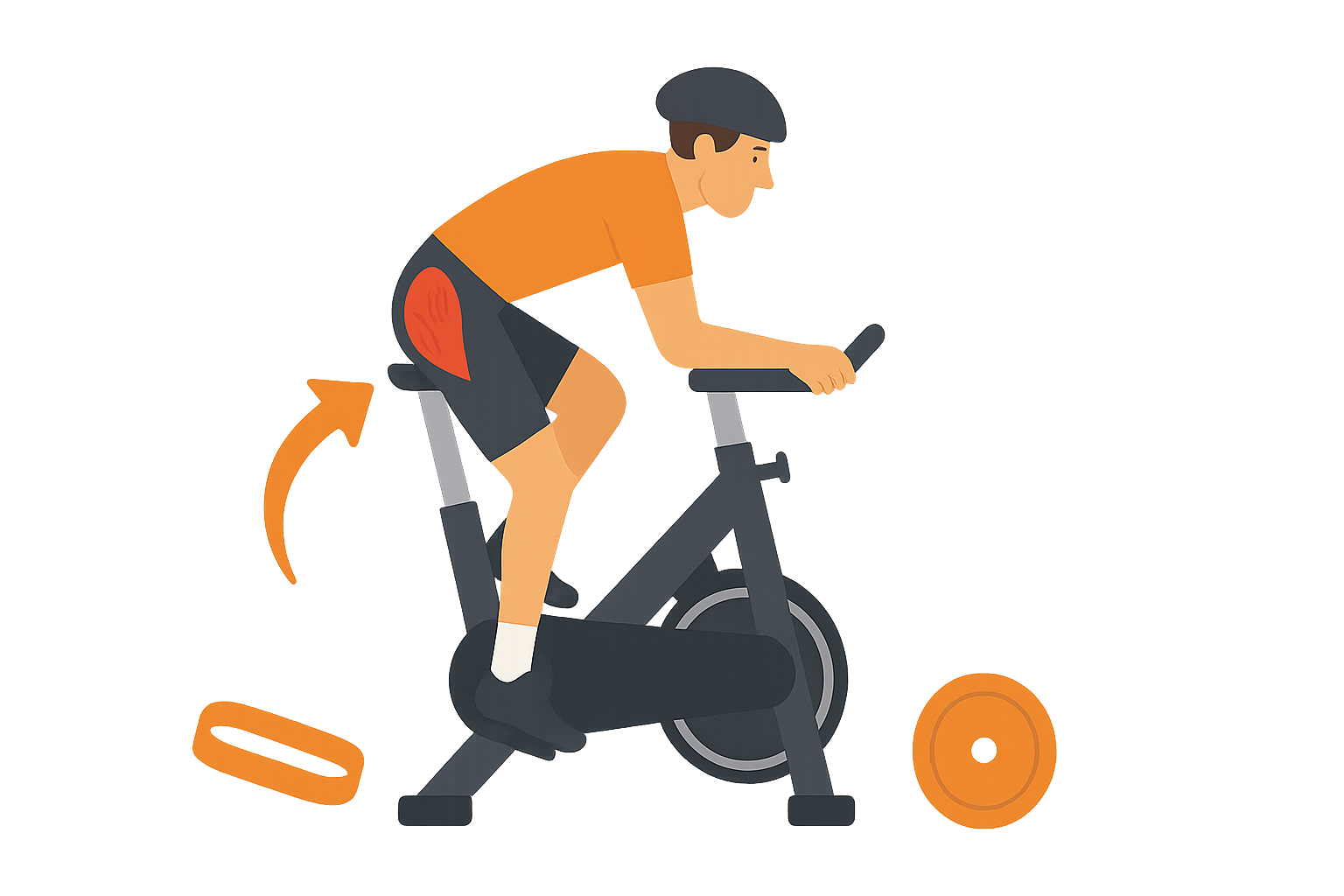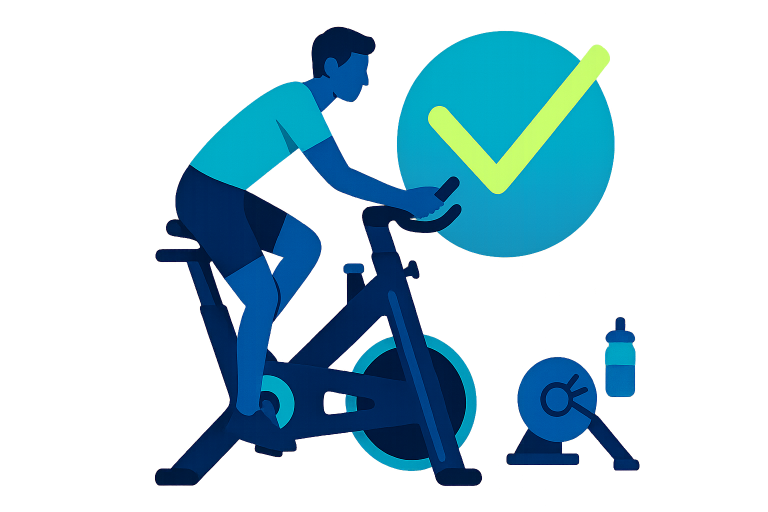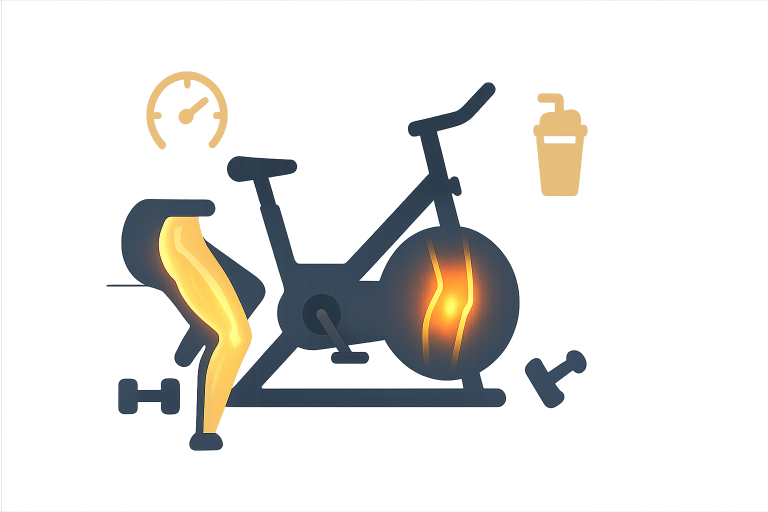The Key to More Power: Glute Activation Exercises for Cycling
After cycling for a few years now, I’ve seen a common problem: I train hard but hit a wall with my power output. The reason is often simple. My glutes, the most powerful muscles in my body, are barely working during a ride. Instead, my quads and calves do all the work, leading to plateaus, muscle imbalances, and even injuries.
This article will show you why your glute activation exercises for cycling power are a game-changer. It’s not about training more; it’s about training smarter by activating the right muscles at the right time. We’ll cover the science behind it, the risks of weak glutes, and the five best exercises to unlock your true potential on the bike.
Why Your Glutes Are the Missing Link to More Cycling Power
Your gluteal muscles (gluteus maximus, medius, and minimus) are a cyclist’s secret weapon. When they aren’t working, other muscles have to pick up the slack. This leads to tired hip flexors, a strained lower back, and a lower overall power output. It’s like trying to drive a car with a flat tire.
How Weak Glutes Lead to Lower Power Output
Lower power output from glute weakness happens in two main ways. First, your legs can’t generate maximum force when the gluteus maximus isn’t helping with hip extension. Second, an unstable pelvis due to a weak gluteus medius causes energy leaks. This means power that should be going to the pedals is wasted just to keep you stable.
Cyclists with stronger glutes can produce 12-15% more power during standing starts and sustained efforts. That’s a significant difference that can help you stay with the pack on a climb.
The Biggest Mistake Cyclists Make
Many cyclists focus only on saddle time, thinking that more miles automatically means more power. While training volume is important, you can’t build a powerful engine on a weak foundation. The issue isn’t a lack of training; it’s a lack of proper muscle activation.
I once worked with a cyclist who couldn’t improve his time trial results despite training over 15 hours a week. After just three weeks of adding proper glute activation exercises for cycling power to his routine, his power output jumped by 8%. This shows that activating the right muscles is more effective than just adding more miles.
The Solution: Glute Activation for Cycling
Glute activation work is a simple but powerful solution. It’s a targeted routine designed to “wake up” your glutes and teach them to fire correctly during movement. These exercises train your nervous system to use these powerful muscles efficiently.
When you start these exercises, you’ll feel more than just increased power. Many cyclists also report improved comfort on long rides and a reduction in knee and lower back pain.
The Role of the Gluteal Muscles
Each of your three gluteal muscles plays a unique role in your pedal stroke.
- Gluteus Maximus: Your primary power generator. This is the largest muscle in your body and drives the pushing phase of your pedal stroke. When properly activated, it can contribute up to 40% of your total pedaling power.
- Gluteus Medius: This muscle keeps your pelvis stable. A weak gluteus medius can cause your hip to drop and your knee to collapse inward, leading to lost power and potential injury.
- Gluteus Minimus: Though the smallest, it’s crucial for maintaining fine motor control and a proper bike position, especially during long rides.
The Science of Power: How Your Glutes Drive the Pedal Stroke
The biomechanics of cycling power center on hip extension. This movement, where you drive your thigh back while keeping your pelvis stable, should be powered mainly by your gluteus maximus. When this muscle fires properly, it creates a strong push through the pedal stroke.
The 5 Best Glute Activation Exercises for Cycling Power
These five exercises are the foundation of any effective glute activation routine. They target specific parts of your glute function that directly improve your cycling performance.
How to Incorporate an Activation Routine
Timing and consistency are critical to achieve optimal results. You can perform these exercises 2-3 times per week:
| Routine Type | Sets/Reps | Purpose |
|---|---|---|
| Pre-ride Warm-up | 1-2 sets, 8-15 reps each | Wake up glutes for better ride recruitment |
| Strength Training Days | 1-2 sets, 8-15 reps each | Activate glutes before compound lifts |
| Recovery Days | 1 set, 8-12 reps each | Maintain muscle recruitment with low stress |
The Importance of Proper Form
Proper form is crucial for effectiveness and injury prevention. Focus on quality of movement over a high number of repetitions. You should feel the target muscles working. If not, slow down and focus on the movement.
Exercise 1: Single-Leg Glute Bridge

This is an ideal glute activation exercise because it mimics the hip extension of the pedal stroke while challenging pelvic stability.
How to Perform:
- Lie on your back with your knees bent and feet flat on the floor.
- Lift your right foot off the ground, pulling your knee toward your chest.
- Drive through your left foot to lift your hips. Squeeze your left glute to create the movement.
- Your body should form a straight line from your knee to your shoulder.
- Hold for 2-3 seconds at the top before slowly lowering back down.
- Complete 10-15 repetitions before switching legs.
Key points:
- Keep your pelvis level.
- Drive from your glute, not your hamstring.
Exercise 2: Clamshells
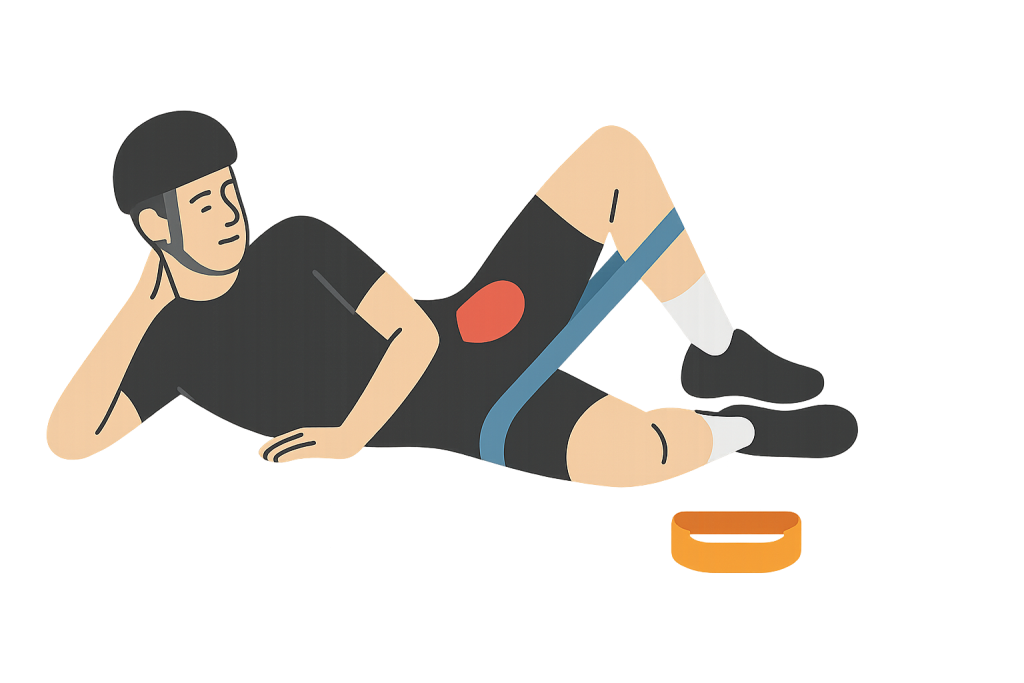
Clamshells specifically target the gluteus medius, which is essential for pelvic stability. This can help cyclists who have issues with their knees collapsing inward.
How to Perform:
- Lie on your side with a resistance band around your thighs, just above your knees.
- Bend your hips and knees to about a 45-degree angle.
- Keeping your feet together, rotate your top leg up by squeezing your glute.
- The movement should come from your hip, not your knee or ankle.
- Complete 12-15 repetitions before switching sides.
Key points:
- Keep your core engaged to prevent rolling backward.
- Lead with your knee, not your foot.
Exercise 3: Bulgarian Split Squats

This powerful exercise builds glute strength while also challenging your balance and stability.
How to Perform:
- Stand 2-3 feet in front of a bench. Place the top of your right foot on the bench behind you.
- Lower your body by bending your front knee, focusing on sitting back into your hip.
- Drive through your front foot to return to the starting position.
- Complete 8-12 repetitions before switching legs.
Key points:
- Keep 70-80% of your weight on your front leg.
- Focus on the hip hinge movement.
Exercise 4: Banded Glute Kickbacks

This exercise isolates the gluteus maximus, which is especially helpful for cyclists who have trouble feeling their glutes working during other movements.
How to Perform:
- Get on your hands and knees with a resistance band looped around your feet.
- Keep your back straight and your core engaged.
- Keeping your knee bent at 90 degrees, drive your right foot toward the ceiling by squeezing your glute.
- Control the movement as you return to the start.
- Complete 12-15 repetitions before switching legs.
Key points:
- Keep your hips square to the ground.
- The movement should come from your glute, not your back.
Exercise 5: Single-Leg Deadlifts
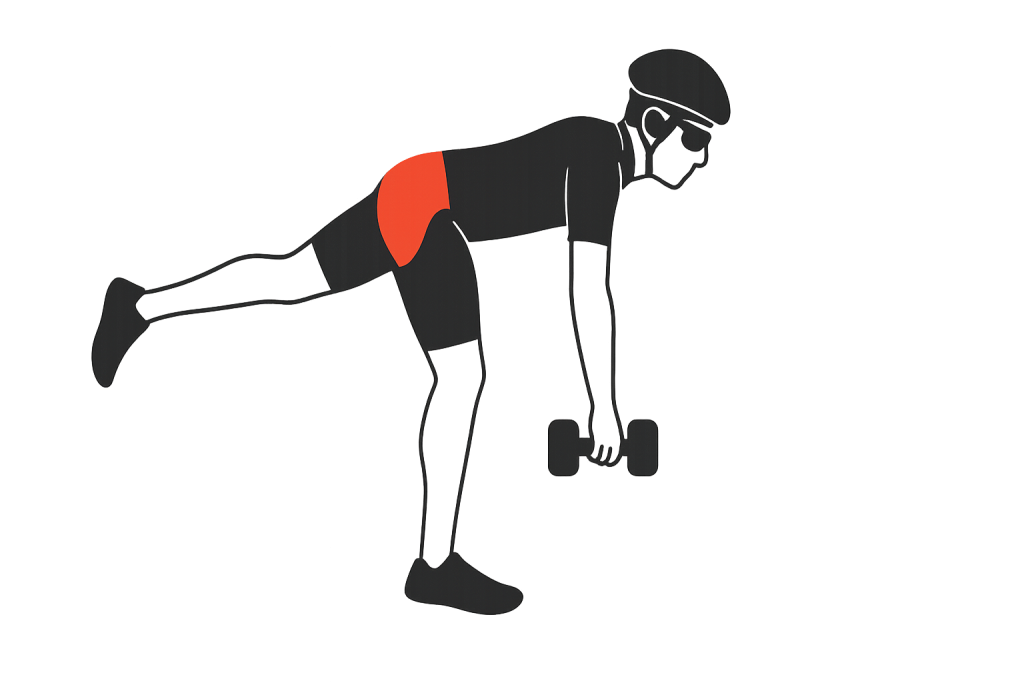
This functional movement improves balance and posterior chain strength, which directly transfers to cycling power.
How to Perform:
- Stand on your left foot with a slight bend in your knee. You can hold a light dumbbell if you like.
- Hinge at your hip, pushing your right leg back behind you as you reach toward the ground.
- Keep your back straight and drive through your left foot to return to standing.
- Complete 8-10 repetitions before switching legs.
Key points:
- Keep your standing leg slightly bent throughout the movement.
- The movement comes from your hip, not your back.
Beyond the Exercises: Maximizing Your Glute Activation
To get the most out of your glute activation work, you need to think about the bigger picture of mobility, recovery, and integration.
The Role of a Foam Roller
Tight hips and overactive muscles can prevent your glutes from firing properly. Using a foam roller or lacrosse ball on your hip flexors and other tight areas can help your glutes function more effectively.
Core Strength and Glute Activation
Core strength provides the stable base that allows your glutes to generate maximum force. When your core is weak, your glutes have to help with stabilization, which reduces their power-generating capacity. Simple exercises like planks and dead bugs can make your glute work more effective.
Integrating a Comprehensive Strength Training Program
Activation exercises are most effective when they are part of a larger strength training plan. Compound exercises like squats and deadlifts build the overall strength you need to support your cycling performance. When you do activation exercises before these lifts, you ensure you’re training the correct movement patterns under load.
The Long-Term Benefits of Glute Strength for Cyclists
The path to improved cycling power isn’t always about riding more miles. Sometimes, it’s about activating the powerful muscles you already have. Strong glutes not only boost your power output but also improve your ability to handle long rides, reduce your risk of injury, and help you maintain a better position on the bike.
Anyone Can See Results
You don’t need to be a professional cyclist to see a benefit. Most people notice a difference in how they feel on the bike within 1-2 weeks. Measurable power improvements typically show up within 3-4 weeks of consistent effort. The only thing you need is consistency and a focus on proper movement.
Start with a few of these glute activation exercises for cycling power today. Your future cycling performance depends on the foundation you build now.
